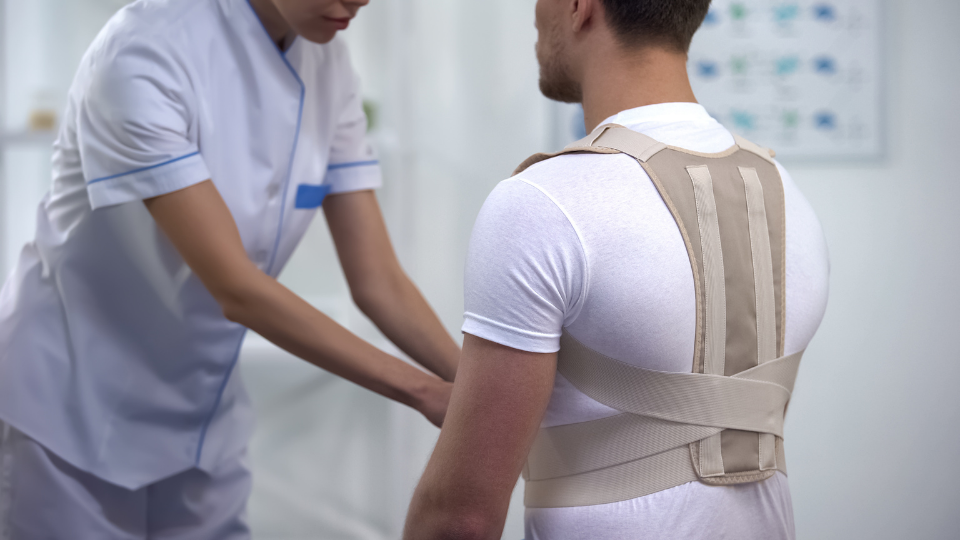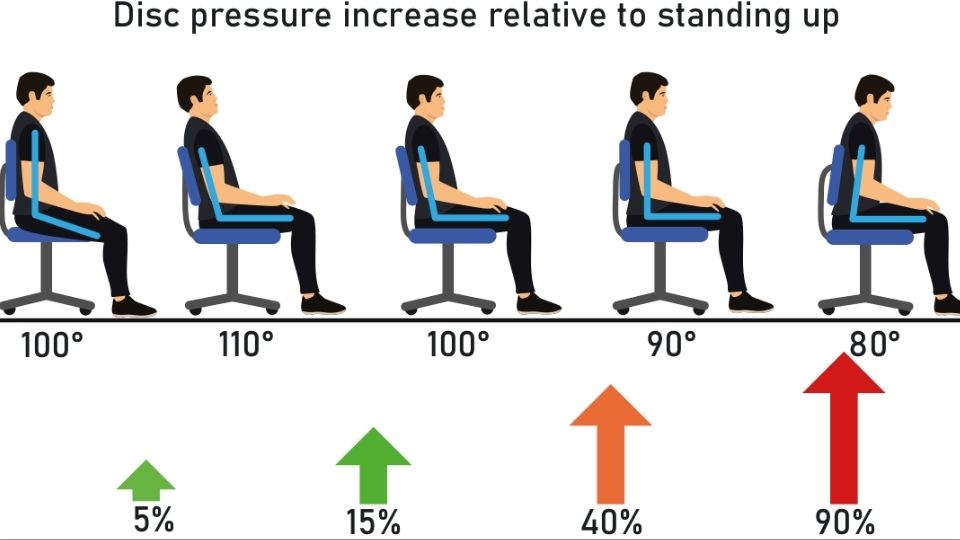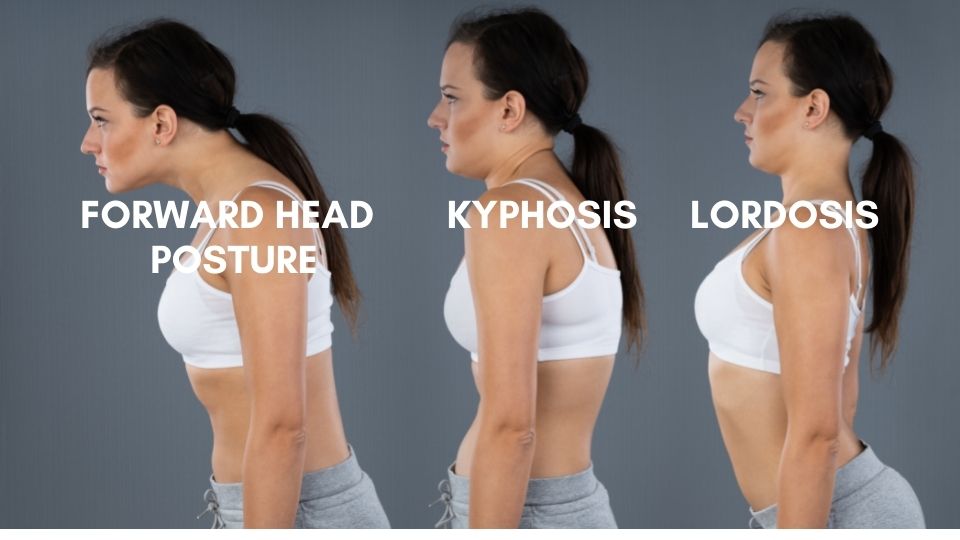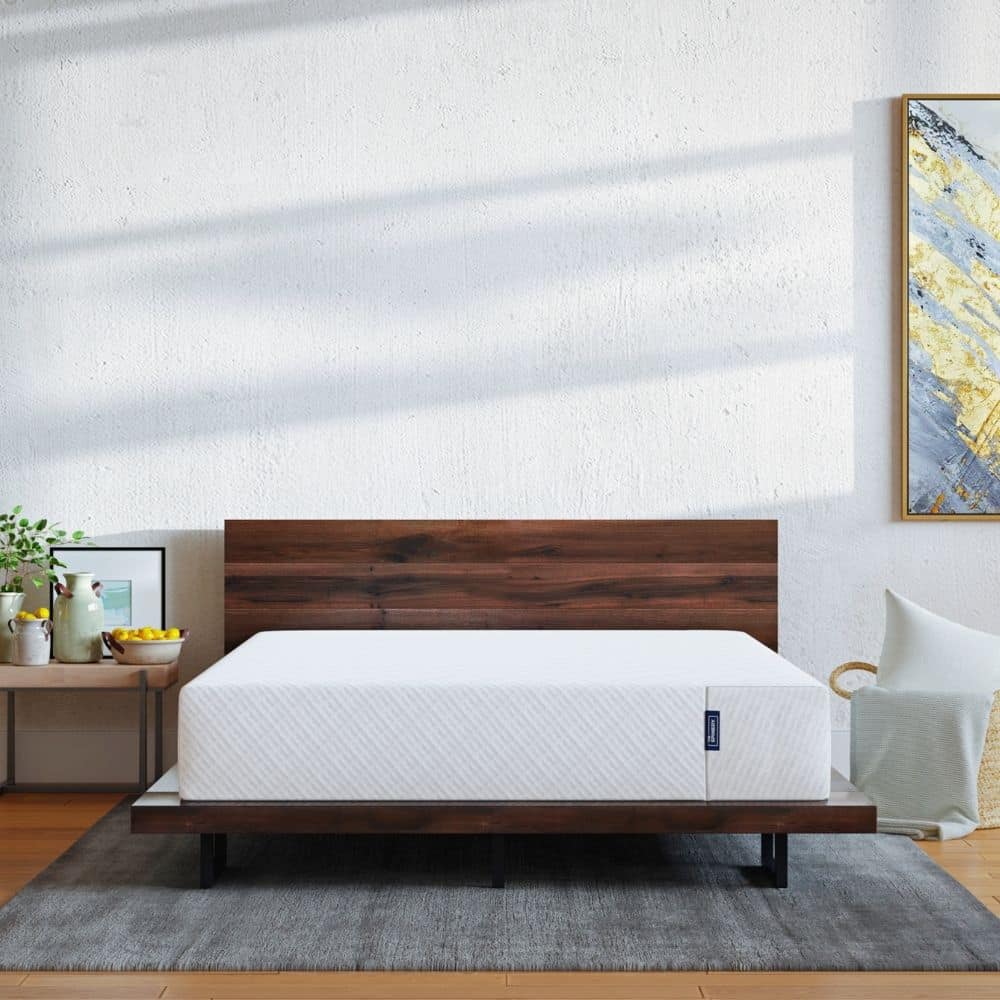We all know that bad posture is bad for our backs, but what can we do to correct it? Some people turn to posture braces in an effort to improve their alignment, but do these devices really work? Here’s what you need to know.
As a general rule, a posture brace won’t cure bad posture. Research on the effectiveness of posture braces is lacking. The use of a posture brace might temporarily alleviate discomfort, but it’s not a sustainable solution for long-term posture problems.
I often hear patients ask me if they need a back brace posture corrector, usually because they’ve seen an advertisement somewhere or someone has recommended it to them. My first question is always “what is your goal?” If the goal is to relieve pain, then I need to know more about the person’s specific situation.
In general, the shocking truth is that I do not recommend posture correctors because they can do more harm than good. Good posture is important for lifelong health and wellness, and that’s something I know a lot about.
For 30 years, I’ve been a chiropractor helping people achieve better health, and for almost as long, I’ve been an ergonomist, which is the study of how people interact with their environment. In that time, I’ve published a book on posture while sitting, spoken about posture on national TV, engineered solutions to poor posture, and amassed a YouTube following of over 10,000 subscribers. My work in this area also led to a successful Kickstarter campaign for a posture-sitting device. In short, I know a lot about posture and its importance for lifelong health.
The Problem with Posture Correctors
Here’s why I usually do not recommend these devices:
- When you wear a posture corrector, it changes the way your muscles fire. That’s because the posture corrector is taking over the job of stabilizing your spine, so your muscles don’t have to work as hard. Over time, this can lead to muscle weakness and even atrophy (shrinking).
- If you wear a posture corrector for extended periods of time, it can actually change the shape of your spine. That’s because the brace is holding your spine in a fixed position, which can cause the bones to fuse together in that position. So, if you’re thinking about getting a back brace posture corrector, read on.
Can You Correct Years of Bad Posture?
Posture isn’t just about looking good. Good posture also helps to prevent pain and injury and can improve your overall health. If you’ve been living with poor posture for years, you may be wondering if it’s too late to make a change. The good news is that it’s never too late to improve your posture. I’ve written a book on how to improve your posture at any age here.
Even if you’ve developed chronic pain or injuries as a result of your bad posture, there are steps you can take to start feeling better. With a little effort, you can learn to sit, stand, and sleep in alignment and you may be surprised at how much difference it makes in your overall health and well-being.
How to Sit in Alignment
How to Sleep in Alignment
How to Stand in Alignment
How to Exercise in Alignment
Many people believe that wearing a back brace that they saw in an advert will help to improve their posture, but I found that this is not generally the case. While a back brace may provide some support and relief from pain, it is unlikely to correct poor posture. The reason for this is that posture is largely a matter of muscle memory. Wearing a back brace changes the position of the spine, but does not necessarily change the way the muscles surrounding the spine are used. As a result, poor posture often persists even after the brace is removed. In some cases, it may even be exacerbated by the use of a back brace which may weaken your back muscles. For these reasons, it is generally advisable to seek other methods of improving posture, such as re-learning how to sit, stand and sleep in alignment.
Here’s the exception:
In general, posture correction braces, if not used to force you into a position, provide feedback and enable self-correction for those who wish to improve their posture without having a medical condition. The best thing you could do would be to stop wearing the brace as soon as possible so that you will have the endurance and self-awareness to ensure that you never repeat harmful posture patterns again.
If you wear a brace that holds your back straight and takes all the weight, you aren’t using your upper back muscles to improve your posture. Thus, as soon as you remove it, you will revert to your old posture habits. However, if the brace provides feedback and enables self-correction, it may help improve posture over time. This feedback will ultimately improve posture even when not wearing the brace. In addition, it is essential to focus on strengthening the muscles that support good posture so that there is less reliance on the brace over time.
Do Doctors Recommend Posture Braces?
There are many different products on the market that claim to improve your posture, but do doctors actually recommend them? The answer, according to most experts that I spoke with, is no.
While posture braces may provide a temporary reminder of where your posture should be, they don’t do anything to actually improve your muscle strength or flexibility. The best way to improve your posture is through regular exercise and stretching, which will help to lengthen and strengthen the muscles that support your spine.
Can Rounded Shoulders Be Corrected?
Poor posture is often to blame for rounded shoulders, as the position of the shoulders can have a cascading effect on the rest of the body. When the shoulders are hunched forward, the head tends to jut out, and the spine curves inward. Over time, this can lead to muscle imbalances, joint problems, and pain.
The good news is that, in most cases, rounded shoulders can be easily fixed or prevented. Just as the muscles and joints have been trained to hunch forward, they can be retrained to find the correct resting position.
Sitting in Alignment
A simple tip is to get your seating right (above). If you sit with your hips above your knees (using an ergonomic seat wedge), your shoulders straighten up automatically. You may also want to try some basic stretching and strengthening exercises to improve posture and alignment. With a little effort, you can soon say goodbye to rounded shoulders for good.
Standing in Alignment
Rounded shoulders are a common posture problem that can lead to pain and stiffness in the neck, back, and shoulders. The good news is that rounded shoulders can be corrected with a little effort. Here are a few tips to help you improve your posture and get rid of those rounded shoulders:
- When you stand, make sure that your knees are unlocked and your palms are facing outwards. This will help to open up your chest and pull your shoulders back.
- When you walk, keep your head up and look straight ahead. This will help to prevent your shoulders from rounding forward.
- Try to do some gentle stretching exercises every day. This will help to loosen up tight muscles and improve your range of motion.
- Make sure to take breaks throughout the day to move around and stretch your body. Sitting in one position for too long can lead to rounded shoulders and other posture problems.
- Strength training exercises can also help to correct rounded shoulders by strengthening the muscles around the shoulder blade.
Sleeping in Alignment
A mattress that keeps your spine in proper alignment is essential for a good night’s sleep. When you toss and turn, your spine can become misaligned, causing pain and discomfort. A good mattress will provide the support you need to keep your spine in alignment, so you can sleep soundly through the night.
In addition, an orthopedic mattress that helps to keep your spine aligned can also help to reduce back pain and improve your overall posture. When shopping for a new mattress, be sure to keep the spinal alignment in mind in order to find the best possible option for your needs.
Do Chiropractors Recommend Posture Correctors?
While you may see people walking around with posture correctors, you might be wondering if we chiropractors actually recommend them. The answer is no- for a few reasons.
Here’s why:
- Forcing your body into good posture with a brace can actually lead to more muscle weakness, as you become dependent on the brace.
- Wearing a posture corrector all the time can actually fix your posture in the short term, but in the long term, it can actually make your posture worse.
Conclusion
If you’re looking for a long-term solution to your posture problems, a posture brace probably isn’t it. While using a brace might provide some temporary relief, it’s not going to fix the root of the problem. However, in some severe cases, a medical posture correction girdle can control the progression of scoliosis or a severe forward head posture orthosis with a kyphosis brace has a significant effect on the restoration of normal cervical curve and correcting kyphotic posture.
However, baring severe cases, it may be more beneficial for you to focus on building good habits and strengthening your muscles so that you can maintain good posture without assistance.
Sources:
- Manor, J., Hibberd, E., Petschauer, M. and Myers, J., 2016. Acute effects of posture shirts on rounded-shoulder and forward-head posture in college students. Journal of Sport Rehabilitation, 25(4), pp.309-314.
- Fok, Q., Yip, J., Yick, K.L., Ng, S.P. and Tse, C.Y., 2018. Effectiveness of posture correction girdle as conservative treatment for adolescent idiopathic scoliosis: a preliminary study. Ortho. Res. Online J., 1, pp.1-3.
- Noordin, N.B., Chyi, L.K., Ting, A. and Wah, Y.C., 2022. INNOVATION OF FORWARD HEAD POSTURE ORTHOSIS WITH KYPHOSIS BRACE. Journal of Positive School Psychology, pp.3517-3524.










